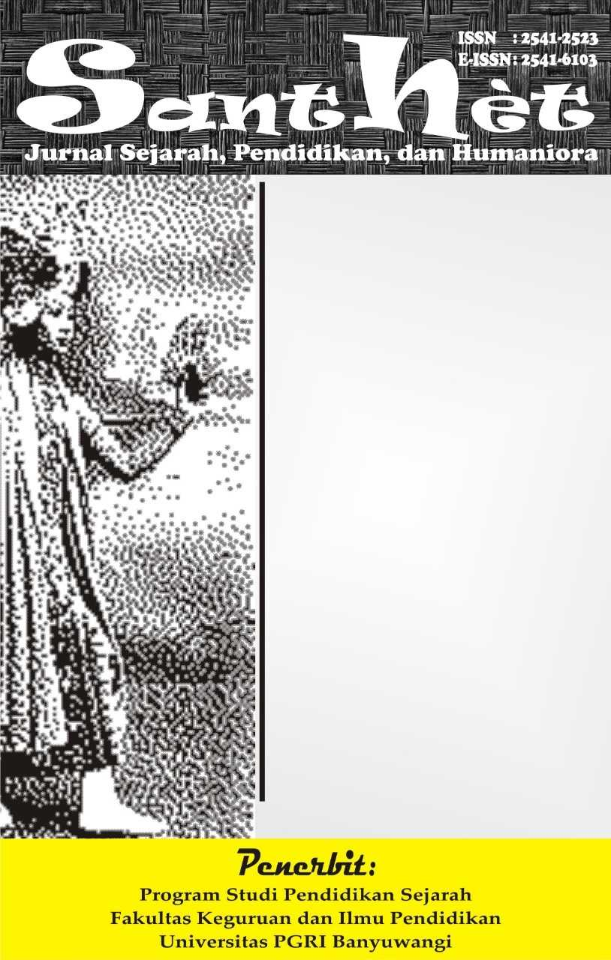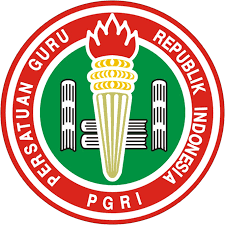CAN THE WELFARE OF HINDU CLERGY IN BALI BE ASSESSED USING AMARTYA SEN'S CAPABILITY APPROACH
DAPATKAH KESEJAHTERAAN ROHANIAWAN HINDU DI BALI DIKAJI DENGAN PENDEKATAN KAPABILITAS AMARTYA SEN
DOI:
https://doi.org/10.36526/santhet.v7i1.2790Keywords:
Capability, Hindu Clergy, WelfareAbstract
The movement space of Sulinggih, the Balinese Hindu clergy, is severely restricted in various aspects due to the rules set by the Balinese community to preserve its sanctity. These social rules dictate that Sulinggih must relinquish secular work and focus solely on religious activities. This study aims to explore the applicability of Amartya Sen's Capability Approach theory in analyzing the well-being of Hindu clergy in Bali. The research employs a qualitative method, specifically a literature study. The study reviews the variables identified by Amartya Sen in his writings and studies, which have also been further examined by economists. Based on the analysis, this study proposes a conceptual framework to elucidate and predict how the variables in Sen's theory influence the welfare outcomes of Hindu clergy in Bali. The framework considers commodities and capabilities as potential mediating variables, while conversion factors and social choices are seen as factors that moderate the impact of resources on the attainment of functionings.
References
Amartya, S. E. N. (1988). Freedom of choice: concept and content. European Economic Review, 32(2–3), 269–294.
Anand, P., Hunter, G., & Smith, R. (2005). Capabilities and well-being: Evidence based on the Sen-Nussbaum approach to welfare. Social Indicators Research, 9–55.
Anand, P., & Van Hees, M. (2006). Capabilities and achievements: An empirical study. The Journal of Socio-Economics, 35(2), 268–284.
Arrow, K. J. (2012). Social choice and individual values (Vol. 12). Yale university press.
Arrow, K. J., Sen, A., & Suzumura, K. (2010). Handbook of social choice and welfare (Vol. 2). Elsevier.
Ayuningsasi, Ketut, A. A., & Sukadana, I. W. (2021). Pengukuran Tingkat Kesejahteraan Ekonomi Sulinggih di Bali (Studi Kasus Ida Pandita Mpu). Laporan Akhir Penelitian. Denpasar: Universitas Udayana.
Balestrino, A. (1994). A Note on Functioning-Poverty In Affluent Societies. Rivista Internazionale Di Scienze Sociali, 125–141.
Balestrino, A., & Sciclone, N. (2001). Should we use functionings instead of income to measure well-being? Theory, and some evidence from Italy. Rivista Internazionale Di Scienze Sociali, 3–22.
Bickerton, G. R., Miner, M. H., Dowson, M., & Griffin, B. (2015). Spiritual resources as antecedents of clergy well-being: The importance of occupationally specific variables. Journal of Vocational Behavior, 87, 123–133.
Blanton, P. W., & Morris, M. L. (1999). Work-related predictors of physical symptomatology and emotional well-being among clergy and spouses. Review of Religious Research, 331–348.
Brandolini, A., & D’Alessio, G. (1998). Measuring well-being in the functioning space. General Conference of The International Association for Research in Income and Wealth, Cracow, Poland.
Britz, J., Hoffmann, A., Ponelis, S., Zimmer, M., & Lor, P. (2013). On considering the application of Amartya Sen’s capability approach to an information-based rights framework. Information Development, 29(2), 106–113.
Burchardt, T., & LeGrand, J. (2002). Constraint and Opportunity: Identifying Voluntary Non-Employment Centre for Analysis of Social Exclusion (CASE). London School of Economics, London.
Crespo, R. F. (2013). Theoretical and practical reason in economics: capacities and capabilities. Springer Science & Business Media.
Frame, M. W., & Shehan, C. L. (1994). Work and well-being in the two-person career: Relocation stress and coping among clergy husbands and wives. Family Relations, 196–205.
Garnham, N. (2007). Habermas and the public sphere. Global Media and Communication, 3(2), 201–214.
Gasper, D. (1997). Sen’s capability approach and Nussbaum’s capabilities ethic. Journal of International Development, 9(2), 281–302.
Gotoh, R. (2021). The Ethics and Economics of the Capability Approach. Springer.
Haney, B. R. (2008). The relationship between labor market structure and clergy compensation in Protestant denominations. Atlantic Economic Journal, 36, 65–75.
Juniarta, H. P., Susilo, E., & Primyastanto, M. (2013). Kajian profil kearifan lokal masyarakat pesisir pulau gili kecamatan Sumberasih kabupaten Probolinggo Jawa Timur. ECSOFiM (Economic and Social of Fisheries and Marine Journal), 1(1).
Klasen, S. (2000). Measuring poverty and deprivation in South Africa. Review of Income and Wealth, 46(1), 33–58.
Kuklys, W. (2005). Amartya Sen’s capability approach: Theoretical insights and empirical applications. Springer.
Laderchi, C. R. (1997). Poverty and its many dimensions: The role of income as an indicator. Oxford Development Studies, 25(3), 345–360.
Lelli, S. (2001). Factor Analysis vs. Fuzzy Sets theory: Assessing the influence of different techniques on sen’s functioning approach. Katholieke Universiteit Leuven Leuven, Belgium.
Martinetti, E. C. (2000). A multidimensional assessment of well-being based on Sen’s functioning approach. Rivista Internazionale Di Scienze Sociali, 207–239.
Maslow, A. H. (1954). Motivation and Personality. Harper & Row, Publishers, Inc. New York.
Mok, K., & Jeong, W. (2016). Revising Amartya Sen’s capability approach to education for ethical development. Asia Pacific Education Review, 17, 501–510.
Nussbaum, M. (2003). Capabilities as fundamental entitlements: Sen and social justice. Feminist Economics, 9(2–3), 33–59.
Nussbaum, M. C. (2006). Frontiers of Justice Disability, Nationality, Species Membership. London: The Belknap Press of Harvard University Press Cambridge, Massachusetts.
Ok, Ü. (2009). Cognitive conflict and well-being among Muslim clergy. Archive for the Psychology of Religion, 31(2), 151–176.
Parker, P. D., & Martin, A. J. (2011). Clergy motivation and occupational well-being: Exploring a quadripolar model and its role in predicting burnout and engagement. Journal of Religion and Health, 50, 656–674.
PHDI. (2002). Bhisama Sabha Pandita Parisada Hindu Dharma Indonesia Pusat Nomor: 3/Bhisama/Sabba Pandita Parisada Pusat/X/2002 tentang Pengamalan Catur Warna.
Phipps, S. (2002). The well–being of young Canadian children in international perspective: A functionings approach. Review of Income and Wealth, 48(4), 493–515.
Proeschold-Bell, R. J., Miles, A., Toth, M., Adams, C., Smith, B. W., & Toole, D. (2013). Using effort-reward imbalance theory to understand high rates of depression and anxiety among clergy. The Journal of Primary Prevention, 34, 439–453.
Proffitt, D., Cann, A., Calhoun, L. G., & Tedeschi, R. G. (2007). Judeo-Christian clergy and personal crisis: Religion, posttraumatic growth and well being. Journal of Religion and Health, 46, 219–231.
Qizilbash, M. (2002). A note on the measurement of poverty and vulnerability in the South African context. Journal of International Development, 14(6), 757–772.
Robeyns, I. (2003). The capabilities approach: An interdisciplinary introduction. Department of Political Science and Amsterdam School of Social Sciences Research Working Paper, University of Amsterdam, Amsterdam.
Robeyns, I. (2005). The capability approach: a theoretical survey. Journal of Human Development, 6(1), 93–117.
Rosales, A., Fung, J., & Lee, C. (2021). Clergy well-being: The role of lived values and values fit. Journal of Psychology and Theology, 49(1), 53–66.
Schokkaert, E., & Van Ootegem, L. (1990). Sen’s concept of the living standard applied to the Belgian unemployed. Recherches Économiques de Louvain/Louvain Economic Review, 56(3–4), 429–450.
Sen, A. (1999). Commodities and capabilities. OUP Catalogue.
Sen, A. (2009). The Idea of Justice. Massachusetts: The Belknap Press of Harvard University Press.
Sen, A. (2017). Collective choice and social welfare: An expanded edition. Harvard University Press.
Stewart-Sicking, J. A., Ciarrocchi, J. W., Hollensbe, E. C., & Sheep, M. L. (2011). Workplace characteristics, career/vocation satisfaction, and existential well-being in Episcopal clergy. Mental Health, Religion & Culture, 14(7), 715–730.
Stewart, F. (2005). Groups and capabilities. Journal of Human Development, 6(2), 185–204.
Stewart, F. (2009). Horizontal inequality: two types of trap. Journal of Human Development and Capabilities, 10(3), 315–340.
Sulistyawati, A. (2020). Berbagai Makna Sate Pada Upakara Umat Hindu Di Bali. Journey: Journal of Tourismpreneurship, Culinary, Hospitality, Convention and Event Management, 3(2), 65–80.
Sulistyawati, A. (2018). The Role Of Cultural Values In Motivating The Competencies Of Hindu Balinese Human Resources In Tourism To Gain Manager Level Positions In Rated Hotels In Bali. Journey: Journal of Tourismpreneurship, Culinary, Hospitality, Convention and Event Management, 1(1), 1–12.
Sulistyawati, A. (2019). Tradisi Megibung, Gastrodiplomacy Raja Karangasem. Journey: Journal of Tourismpreneurship, Culinary, Hospitality, Convention and Event Management, 1(2), 1–22.
Sunaryo. (2017). Etika Berbasis Kebebasan Amartya Sen: Integrasi Kebebasan dalam Pilihan Sosial, Demokrasi, dan Pembangunan. Jakarta: PT. Gramedia Pustaka Utama.
Susilo, E. (2010). Dinamika struktur sosial dalam ekosistem pesisir. Universitas Brawijaya Press.
Susilo, E., Purwanti, P., & Fattah, M. (2017). Adaptasi Manusia: Ketahanan Pangan dan Jaminan Sosial Sumberdaya. Universitas Brawijaya Press.
Tanner, M. N., & Zvonkovic, A. M. (2011). Forced to leave: Forced termination experiences of Assemblies of God clergy and its connection to stress and well-being outcomes. Pastoral Psychology, 60, 713–726.
Tanner, M. N., Zvonkovic, A. M., & Adams, C. (2012). Forced termination of American clergy: Its effects and connection to negative well-being. Review of Religious Research, 54, 1–17.
Thomas, S. N., & Plante, T. G. (2015). Psychological well-being of Roman Catholic and Episcopal clergy applicants. Pastoral Psychology, 64, 875–881.
Trawick, M. W., & Lile, S. E. (2007). Religious market competition and clergy salary: Evidence from SBC congregations in the South. American Journal of Economics and Sociology, 66(4), 747–763.
Walker, D. S., Lankshear, D. W., & Vann, C. E. (2018). How Are You, Vicar? A Study in Scripture, Psychology and Clergy Wellbeing in an English Diocese. Rural Theology, 16(2), 80–92.
Wiana, I. K. (2006). Berbisnis Menurut Agama Hindu. Surabaya: Paramita.
Wiradnyana, I. B. G. (2019). Membumikan Weda Mengukur Peran Teks dan Guru Suci. Hindu dan Tradisinya Beberapa Risalah.
Zwierzchowski, J., & Panek, T. (2020). Measurement of subjective well-being under capability approach in Poland. Polish Sociological Review, 210, 157–178.





























